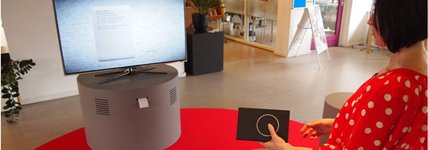
The public library is the most widely used cultural institution, a house for the art form literature, and deeply rooted in democratic enlightenment culture. However recent digitization trends are challenging the traditional functioning of the library such as e.g.
However, the challenges come together with some opportunities as well for the library to be a hub in a future democratic and open, smart city. In this way, the library through a transformation has unique possibilities for remaining a space for seeking, sharing and producing knowledge and for being a space for an open, critical democratic public where the users are seen and see each other as resources.
In this case PIT researchers aim to explore the future library through different experiments, analyses and collaborations with libraries (e.g. with Roskilde and Aarhus Libraries in http://folkelab.dk/, Litteraturen finder sted (http://www.netlitteratur.dk/) and the development of Aarhus’ new library Urban Media Space/Dokk1), cultural institutions, museums and producers (Godsbanen, Aarhus Kunsthal, Ubermorgen, Edition Afterhand), citizen services and municipal organisations connected through the Smart Aarhus initiative.
Research questions: